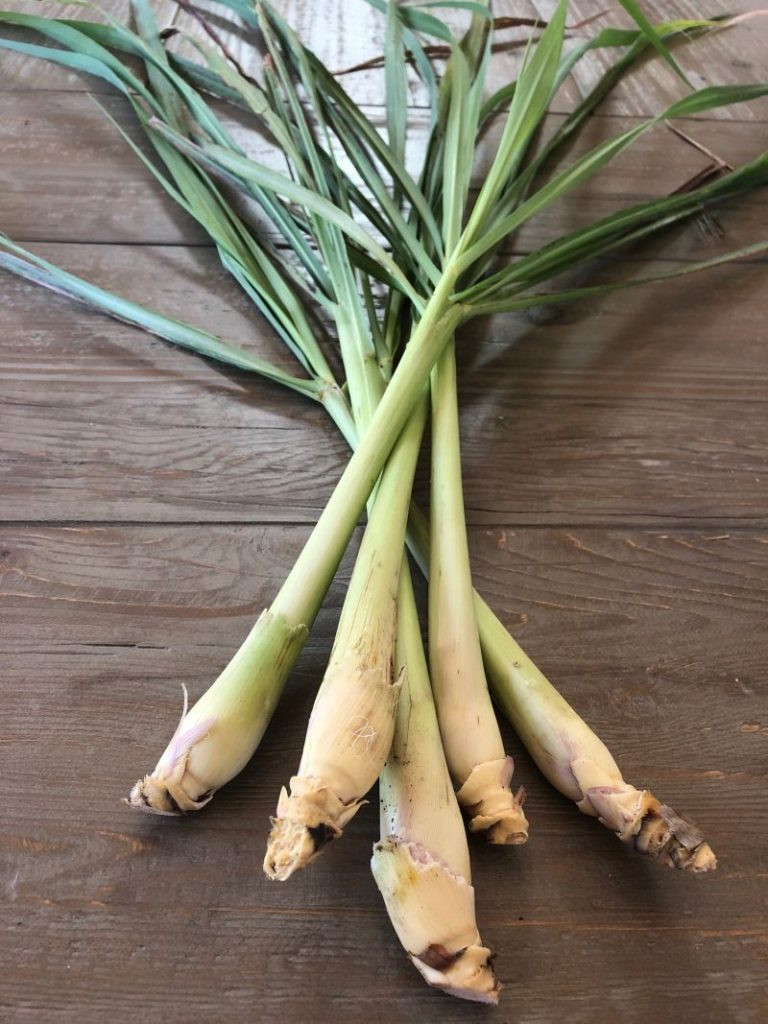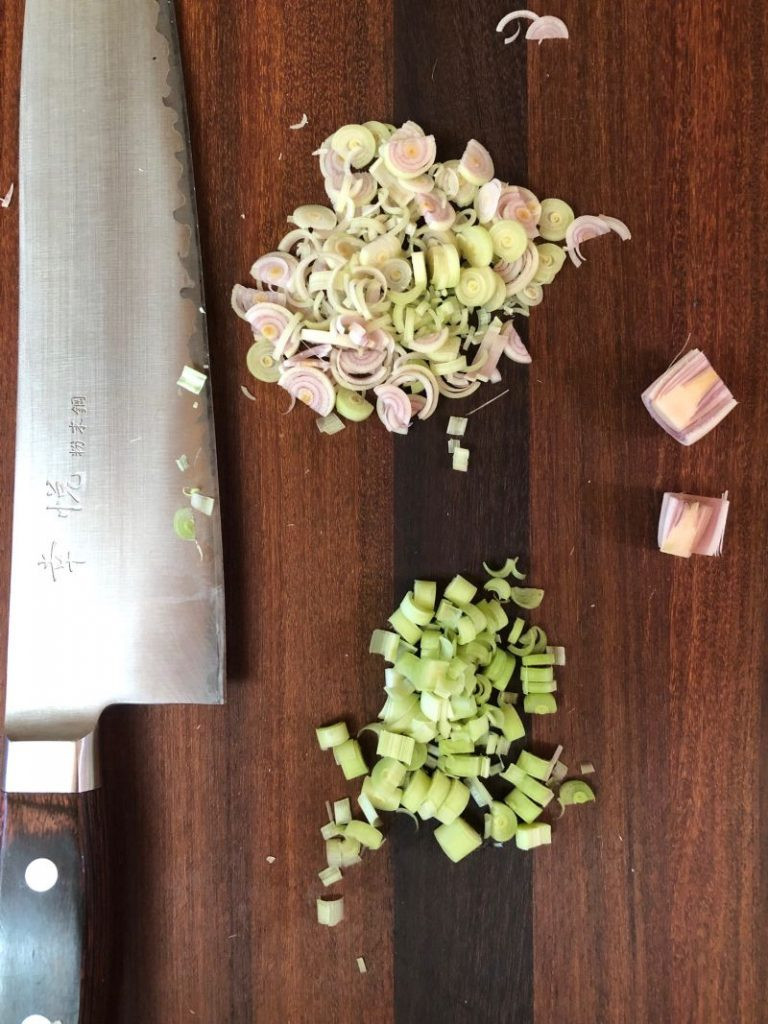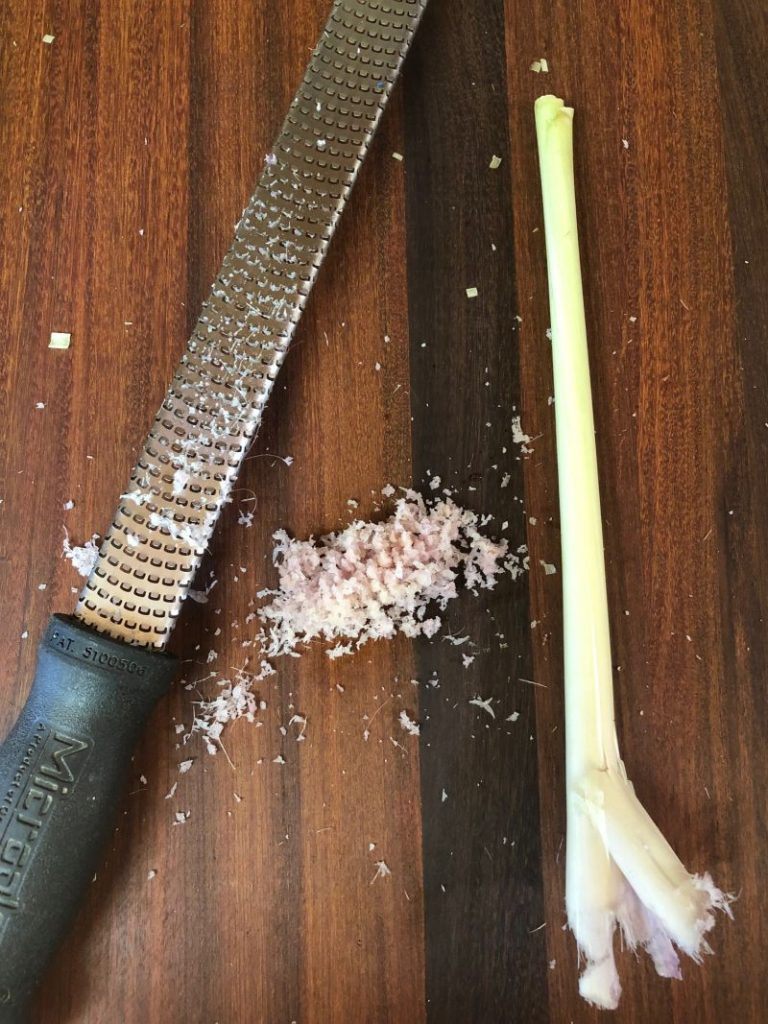Lemongrass, with its vibrant citrusy aroma and flavor, is a staple ingredient in many Southeast Asian cuisines. If you’re looking to elevate your dishes with its unique taste, you might be wondering, “Where Can I Buy Lemongrass?” This guide will walk you through the best places to find fresh lemongrass, how to select the perfect stalks, and tips for preparing and storing this versatile herb.
 Fresh lemongrass stalks, showcasing their vibrant green color and firm texture
Fresh lemongrass stalks, showcasing their vibrant green color and firm texture
Lemongrass, also known as “sả” or “xả” in Vietnamese, is a fragrant stalk that resembles a scallion on steroids. It’s related to citronella and offers a delicate perfume similar to lemon verbena, combined with a refreshing citrusy sweetness. It’s an essential ingredient in countless dishes from Vietnam, Thailand, and beyond, making it a must-have for any adventurous home cook.
One common hurdle for those new to lemongrass is understanding how to handle its firm stalks. Many recipes assume you already know the basics of lemongrass preparation. But don’t worry, you’re not alone if you find yourself puzzled! Learning how to select and prep lemongrass is easier than you think, and this guide is here to help.
Discovering Lemongrass: Where to Shop
Finding lemongrass is easier than ever, thanks to its growing popularity. Here are the most reliable places to purchase fresh lemongrass:
1. Asian Markets: Your Best Bet for Freshness and Variety
Asian markets, particularly Vietnamese, Thai, or Chinese grocery stores, are typically the best places to find fresh lemongrass. These markets often have a dedicated produce section with a wide array of Southeast Asian herbs and vegetables.
- Pros: Usually offer the freshest lemongrass, often at the best prices. You’ll also find other authentic Asian ingredients to complement your lemongrass dishes.
- Cons: May require a trip to a specialty store, depending on your location.
2. Mainstream Supermarkets: Convenient and Accessible
Many large supermarket chains are now stocking fresh lemongrass in their produce sections, especially those catering to diverse communities or with a focus on international foods. Look for lemongrass alongside other herbs like ginger and cilantro.
- Pros: Conveniently located and easily accessible during your regular grocery shopping.
- Cons: Freshness and quality can vary; selection may be limited compared to Asian markets.
3. Farmers’ Markets: Local and Potentially Organic Options
Farmers’ markets are another excellent source, particularly during warmer months. Local farmers who specialize in herbs or Asian vegetables may offer freshly harvested lemongrass.
- Pros: Supports local farmers and often provides the freshest, potentially organic lemongrass.
- Cons: Availability is seasonal and market-dependent. Prices might be slightly higher than supermarkets.
4. Online Retailers: Lemongrass Delivered to Your Doorstep
For ultimate convenience, consider purchasing lemongrass online. Several online retailers specialize in delivering fresh produce and international ingredients directly to your home.
- Pros: Convenient for those with limited access to local markets or who prefer online shopping.
- Cons: You can’t personally inspect the lemongrass before buying; shipping costs may apply.
Selecting the Best Lemongrass: What to Look For
Whether you’re at a supermarket or an Asian market, knowing how to choose lemongrass is crucial. Here’s what to look for to ensure you’re getting the best quality:
 Comparison of good and bad lemongrass stalks, highlighting firmness and color
Comparison of good and bad lemongrass stalks, highlighting firmness and color
- Firmness: Choose stalks that are firm and rigid, not soft or bendy.
- Color: Look for stalks that are pale green to yellowish-green at the base, transitioning to brighter green towards the top. Avoid stalks that are brown, dry, or bruised.
- Fresh Cut Ends: Check the cut bottoms. They should look relatively fresh and not overly dried out or dark.
- Avoid Soft or Sad Stalks: As shown in the image, the supermarket stalk on the right is soft and sad – definitely “no bueno!” Opt for stalks that are solid and vibrant, like the supermarket trimmed stalk in the middle or the homegrown stalk on the left.
Don’t hesitate to buy a bunch of lemongrass if you find good quality stalks. You can store it effectively to use later.
Preparing Lemongrass: Unlock the Flavor
Once you have your fresh lemongrass, knowing how to prepare it is key to unlocking its aromatic potential. Remember the golden rule: “you can’t chew what you can’t chop.” Lemongrass stalks are fibrous and not meant to be eaten whole. Chopping, slicing, or grating them releases their incredible flavor and fragrance.
 Close-up of lemongrass being sliced into thin rings, demonstrating proper chopping technique
Close-up of lemongrass being sliced into thin rings, demonstrating proper chopping technique
Trimming Lemongrass:
- Cut off the base: Chop off the tough bottom base, which has a hard, sometimes V-shaped core.
- Remove the top: Discard the green, woody top section of the stalk.
- Peel outer layers: Peel away any loose or dry outer layers to reveal a smooth, firm stalk underneath.
- Usable section: The trimmed, usable section will typically be 4 to 8 inches long. Don’t discard the trimmings! They can be used to make flavorful lemongrass tea.
Chopping Lemongrass:
- Thin Rings: For many recipes, thinly sliced rings are ideal. Simply slice the trimmed stalk crosswise.
- Half Moons: For a finer chop, split the trimmed stalk lengthwise first, then slice into half circles.
- Tenderizing: To make chopping easier, and to further release the aroma, you can whack the trimmed lemongrass pieces with a meat mallet or the bottom of a heavy pan before chopping. This breaks down the fibers.
Grating Lemongrass:
 Using a Microplane grater to grate lemongrass, showcasing an alternative preparation method
Using a Microplane grater to grate lemongrass, showcasing an alternative preparation method
If a recipe calls for finely minced lemongrass or you’re making a marinade and don’t have a food processor, grating lemongrass is a great alternative. Use a Microplane or a similar fine grater to grate the stalk. Be mindful of your fingers!
Lemongrass Paste and Substitution:
If you’re in a pinch, lemongrass paste (often found in tubes) can be used as a substitute. However, fresh lemongrass is always preferred for the best flavor. If substituting, remember that grated lemongrass and paste are more concentrated than chopped lemongrass. A general conversion is:
- 1 ½ tablespoons grated lemongrass ≈ 2 tablespoons chopped lemongrass
This 3:4 ratio also applies when converting store-bought lemongrass paste to fresh chopped lemongrass.
Storing Lemongrass: Keeping it Fresh Longer
To keep your lemongrass fresh and flavorful for longer, proper storage is essential:
 Trimmed lemongrass stalks ready for freezing, demonstrating a convenient storage method
Trimmed lemongrass stalks ready for freezing, demonstrating a convenient storage method
- Refrigeration: Store fresh lemongrass stalks in a plastic produce bag in the refrigerator for up to a week.
- Freezing: For longer storage, trim the lemongrass stalks and freeze the usable sections in a zip-top bag for up to 3 months. Frozen lemongrass is surprisingly easy to chop and retains most of its flavor.
- Frozen Chopped Lemongrass: You can also finely chop lemongrass in a food processor, mix it with a little neutral oil, and freeze it in a container for up to 3 months for convenient use in cooking.
Growing Your Own Lemongrass: A Sustainable Option
For the truly enthusiastic, growing your own lemongrass is surprisingly easy, even for beginner gardeners.
 A thriving lemongrass plant in a garden, illustrating the ease of growing lemongrass at home
A thriving lemongrass plant in a garden, illustrating the ease of growing lemongrass at home
- Starting from Stalks: Purchase fresh lemongrass stalks from a farmers market or grocery store. Trim the ends slightly and place them in a glass of water on a windowsill until roots develop.
- Planting: Once roots appear, plant the lemongrass in a pot or directly in the ground. If you live in a cold climate, grow it in a pot so you can bring it indoors during winter.
- Care: Lemongrass thrives in partial shade and requires minimal fertilization.
 Harvesting lemongrass from a garden, showcasing fresh and juicy stalks
Harvesting lemongrass from a garden, showcasing fresh and juicy stalks
Harvesting homegrown lemongrass is a joy. Simply cut stalks from the base with a paring knife. Freshly harvested lemongrass is incredibly aromatic and juicy!
Conclusion: Lemongrass is Within Reach
Finding lemongrass is no longer a challenge. Whether you visit your local Asian market, supermarket, or even decide to grow your own, this fragrant herb is readily accessible. With this guide, you’re now equipped to confidently find, select, prepare, and store lemongrass, bringing the vibrant flavors of Southeast Asia to your kitchen. So, go ahead and find your lemongrass – your culinary adventures await!

